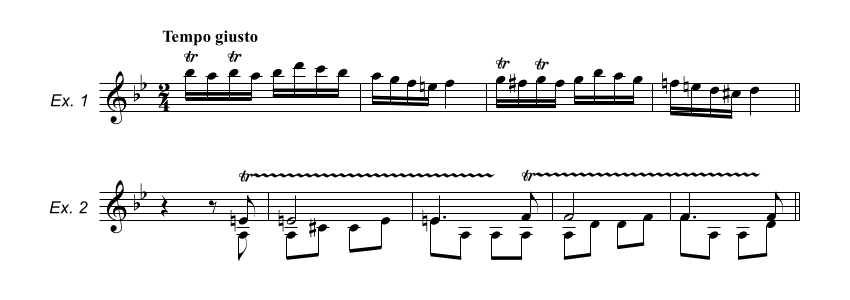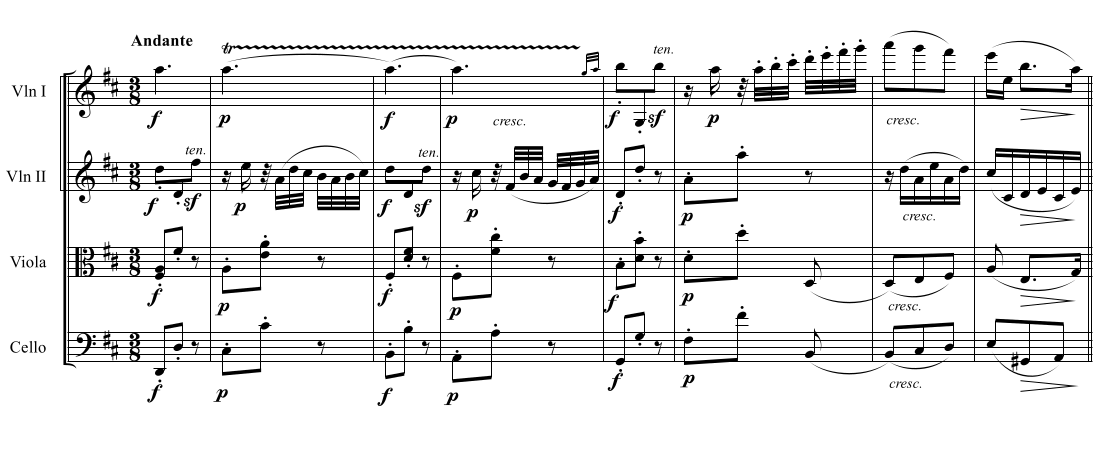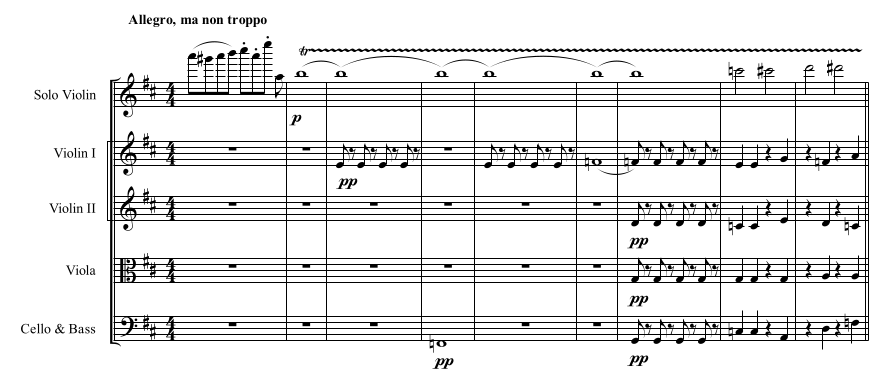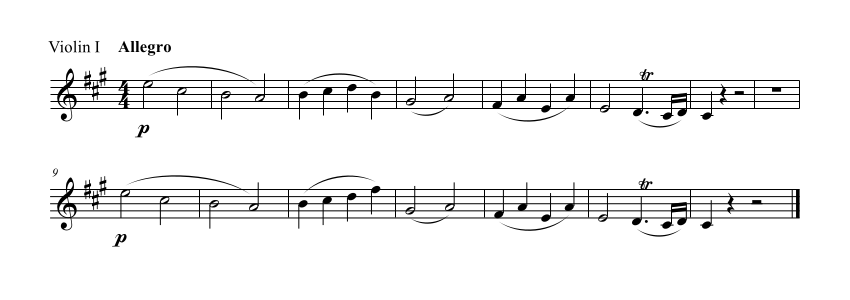Fancy up!
Just like how we wear accessories and fancy clothes, music does the same thing. Instead of a simple quarter note, it would wear a turn, trill, or other kinds of ornaments to fancy itself up. Let's look at how a musical passage can become fancier from ornamentations, and how we should approach them.
Why the ornaments?
To understand how to approach ornaments musically, first we need to understand the purpose of them. Simply put, ornaments are there to beautify the note further. They add a sparkle, accent, or charm to the note. We need to understand the characteristics and purpose of each ornament and play it as such. It seems obvious and unnecessary when described like this, but it makes a difference to consciously think about and understand why ornaments exist in music.
Turns
Let's think about this beautiful turn in the slow movement of Sinfonia Concertante by Mozart.

Without the turn it would look like this:

Sing this passage with no turn in your head a few times. Sing it as musically as you can. Then sing the first example with the turn and see how that turn adds so much more character to the B♭. Think about what kind of turn would make it the most beautiful B♭. Should you play the turn evenly? How fast should it be? Should you vibrate on any of the notes? What kind of bow speed would you apply on each note of the turn? Portato, or no portato?
Mozart could have left this passage with no turn, but the B♭ gains a special life and elegance by adding the turn. Our job as a performer is to get the most out of the turn by figuring out how we should play it.
Trills
Trills are another popular ornamentation we encounter daily. When it comes to trills there are 2 types of trills: a technical trill and a melodic trill.
A technical trill is usually seen in a technically demanding, fast piece. You trill fast and brilliantly to make the sparkly effect on the notes. In some of these pieces you can even show off how quickly your fingers move. These trills do serve a musical purpose but they are used more as an effect.
A melodic trill, on the contrary, does not have to be fast, or should not be fast. This type of trills are seen in a moderate to a slow passage, and the goal of the trill is to add extra beauty and attention to the note.
Technical Trill
When we talk about a technical trill, we can not avoid "The Devil's Trill" Sonata by Tartini. Below are some examples:

The trills in Ex. 1 is a type that gives sparkles to the notes. A quick and bright trill would give an accent to the music.
The trills in Ex. 2 takes a different approach. Fast and continuous trills while notes are changing on the bottom has a mesmerizing effect. You are sure to impress the audience if you can trill quickly and brilliantly in both of these examples.
Melodic Trill
Let's take a look at the opening solo violin part of the Mozart's A major concerto:

This is an example of a melodic trill. You do not want to trill as fast as you can in this type of a trill. It will sound out of place and character if we play melodic trills too fast. The purpose of melodic trills is purely musical. It is not used as a tool to make you look like a good violinist by trilling.
For melodic trills, first we should think of the passage without the trill, like we did in turns. Then think about how a trill would add extra beauty to the passage. Think about what kind of trill would compliment the note most appropriately, instead of trilling as fast as you can.
More Trills
We talked about a long continuous trill in the Tartini's example. Take a look at below, an excerpt from Beethoven's quartet, Op.132. Here, you see a long trill that has a mesmerizing effect but in a different way.

Unlike the Tartini's example, this trill derives purely from a musical necessity. These long trills are one of the characteristics in Beethoven's music, especially in his late period, and bears a tremendous significance in his music. Similar trills are seen in his Violin Concerto as well.

These types of trills are more than making the notes themselves fancy. They compliment the whole ensemble. Study and think about what kind of trills will make the whole quartet or orchestra more beautiful.
Other types of "ornaments"
There are other kinds of "ornaments" in music. For instance, look at this example from Mozart's Clarinet Quintet.

In this excerpt of the quintet, the 1st violin plays a 'B' at the end of measure 3. When the same theme comes back a moment later, the 'B' becomes an 'F'. The first time, the melody goes down by a 3rd to the 'B'. The second time, it goes up by a 3rd to an 'F'. Additionally, after the 'F' the note dives by a 7th which creates a much more dramatic melody than the first time. This is not really an ornament per se, but this 'F' should draw special attention because that is what fancies up the melody the second time compared to the first.
Here is another example, the opening passage from the A minor quartet by Schubert.

Compare that to below.

The melody is kept simple in the first example, then the second time it jumps to an F in the 3rd measure. This creates a dramatic diminished 5th leap, Also, the rest of the measure is arpeggiated instead of a scale, which suggests more motion in the 2nd time. Schubert adds another leap in the melody the 2nd time in the last measure. This time it is a leap of a 3rd which quickly comes back down.
The ornaments that music wears are not always big and obvious. Often, they are subtle and we may miss them if we weren't paying close attention to them. When you find them, see what you can do to maximize the effect of the ornamentation. We should always think why the composer decided to add these ornaments to the music. When we approach that way and understand what the composer intended, we would know how to properly treat these ornaments.